
Of Bans, Blasphemy, Brouhaha and The Bourgeoisie
Written by Monica Arora
The audacious American author Ray Bradbury, in his most popular work, The Martian Chronicles has stated, “They began by controlling books of cartoons and then detective books and, of course, films, one way or another, one group or another, political bias, religious prejudice, union pressure; there was always a minority afraid of something, and a great majority afraid of the dark, afraid of the future, afraid of the past, afraid of the present, afraid of themselves and shadows of themselves.”
Continuing in the same vein as Ray Bradbury’s rant wherein “someone” in society will find “something” offensive, fifteenth and sixteenth century Italy, Pope Daniele de Volterra, who considered himself a strong proponent of Catotholicism ordered some “mandatory revisions” to the Sistine Chapel fresco, The Last Judgement, by getting some loin cloths added to figures which Michelangelo had originally left unclothed. One man’s obscenity can be another man’s art and that is true pertaining to all matters of outlook or perception

Delving into reams of history, one discovers that the German Nazis had coined the phrase “Entartete Kunst” or “Degenerate Art” that applied to all Jewish and modern pieces of art, drama, music, literature and so on. Artists were not just banned and censored but sent to concentration camps and many died there. So vicious was the campaign against these ‘modern’ artists that Nazis only patronized ‘true’ German art, continuing in the tradition of German nineteenth-century realistic genre painting that upheld ‘respectable’ moral values and was easy to understand. In fact, Hitler’s inner circle also treasured certain Old Masters whom they regarded as expressing the true Aryan spirit, in particular Rembrandt, Cranach, and Vermeer. Museum directors and curators who refused to cooperate with the new anti-modernist collecting policies were also dismissed rather unceremoniously.
Perhaps, the most well-known work of art to have drawn ire of conservatives for its sheer audacity and gumption has been Gustave Courbet’s L’Origine du Monde (1866) or The Origin of the World which features the abdomen and genitals of a woman. Part of a collection dedicated to the female form, this art piece was believed to have been commissioned by Turkish diplomat and collector Khalil-Bey, and only exhibited publicly in 1995, when it became a part of the permanent collection at Paris’s Musée d’Orsay, and there are still many an eyelashes batted at its mere mention.
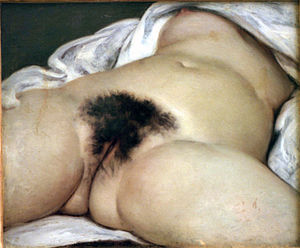
A year prior to this creation, in 1865 Edouard Manet’s Olympia had Paris all shocked and outraged as it depicted a reclining female nude, sprawled tastefully across cushions in a pose akin to Venus of Urbino (1538) or even Francisco de Goya’s La maja desnuda (1797–1800), better known as The Naked (or Nude) Maja.
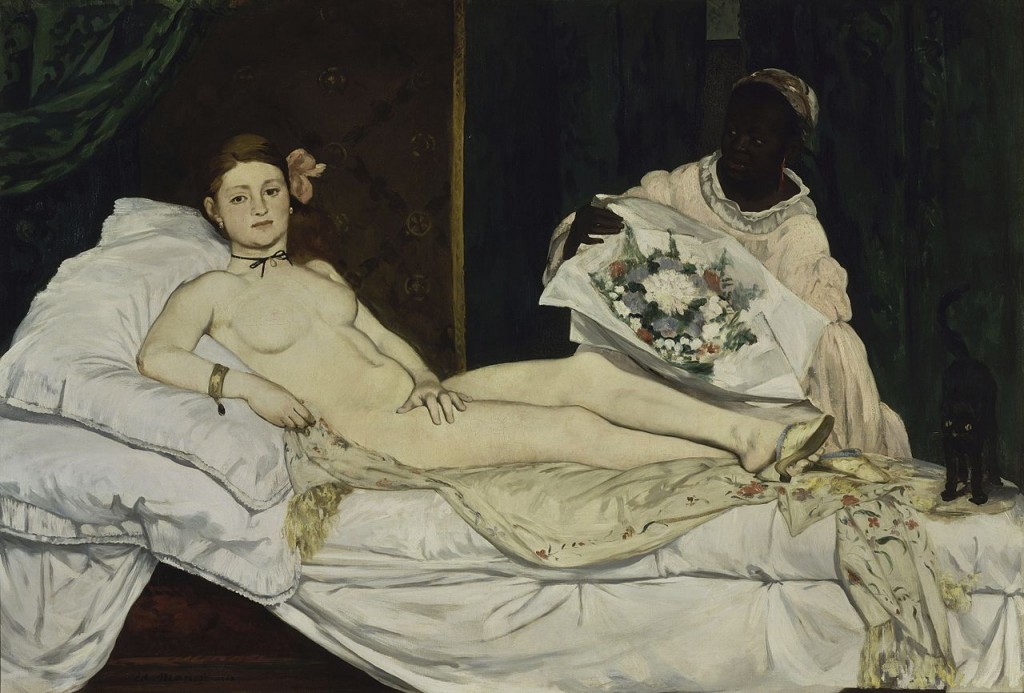
When in 1987 New York based artist Andres Serrano photographed a plastic crucifix allegedly submerged in his own urine and decided to call it Piss Christ, his work drew huge criticism from Catholic fundamentalists who eventually stormed into a gallery in 2011 in Avignon and slashed across the photo.
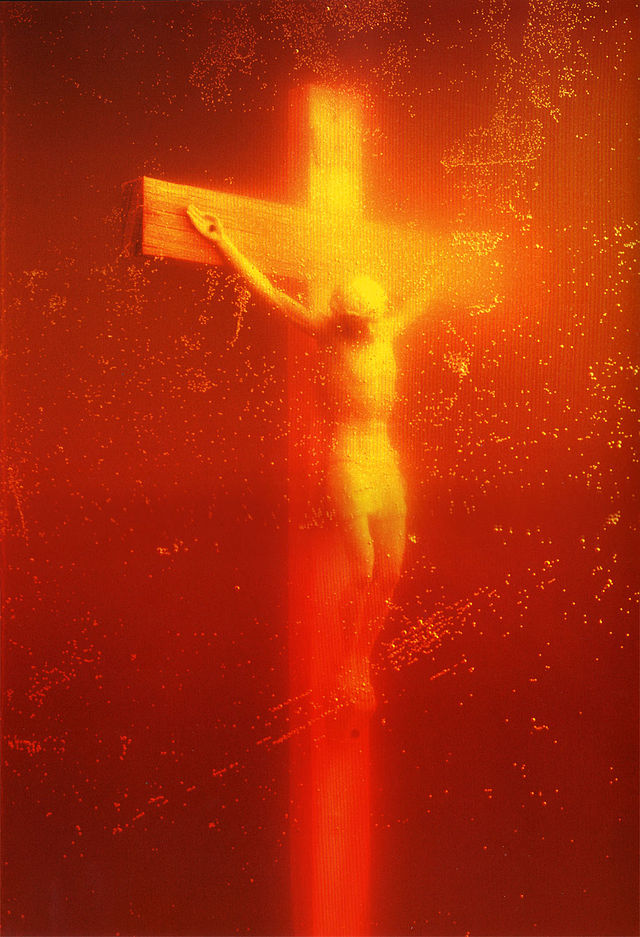
Similarly a lithograph by artist Enrique Chagoya, named The Misadventures of the Romantic Cannibals, which is in the form of a comic book incorporating religious imagery and iconography depicted a Jesus as receiving oral sex from a man. Its print in the Colorado museum was again destroyed by a woman who allegedly screamed, “How can you desecrate my Lord?” before tearing the print.
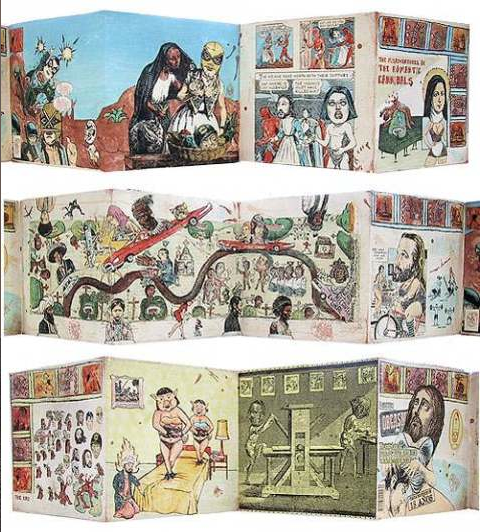
Along the same lines of religious bans and offensive artists, the Argentine artist Leon Ferrari’s 2004 retrospective in Buenos Aires was demanded to be closed as he his creations with The Virgin Mary in a blender? or Saints in a frying pan? were looked down as blasphemous. Just as the video Ants on a crucifix was criticized severely and in 2010 was withdrawn from the National Portrait Gallery in Washington, D.C. 1999. Chris Ofili’s The Holy Virgin Mary depicting a black Virgin Mary with a clump of elephant dung on one breast and clippings of pornographic magazines in the background also earned a lawsuit owing to its sensationalist depiction.
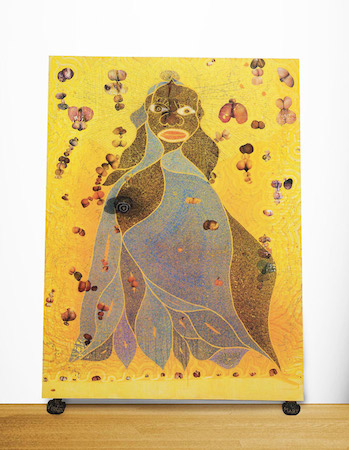
Be it nudity or religion, the list of banned art works and artists is overwhelming and besides these two highly provocative issues, political outrage has also been the centre piece of controversy throughout the ages. Some recent cases of artists being in the spotlight for their stirring or rousing creations have been those of Syrian doctor and artist Kamal Al-Labwani, who witnessed the Hama massacre, in the year 1982, which moved him to oppose the ruling Ba’ath party and establish the Syrian Liberal Democratic Union. Arrested in 2001 and released in 2004 for a brief interlude which allowed him to travel to the US and through the EU, before being imprisoned again on his return to Damascus in 2005, his paintings echo his experiences in prison, and the Emergency Laws prevalent in Syria for the past 40 years, focusing on the abuse of human rights. Chinese artist and activist Ai Weiwei’s art directly attacked his government’s approach to democracy and human rights and therefore, he was detained for three months in April 2011 for being “deviant and plagiarist”.
In 1989, Dread Scott set up an installation at the Chicago Institute of Arts in which viewers could not reach the photography book at the center of the show without stepping on an American flag laid out on the ground. The installation entitled What is the Proper Way to Display the U.S .Flag? earned him his arrest and much rebuke from the US government.
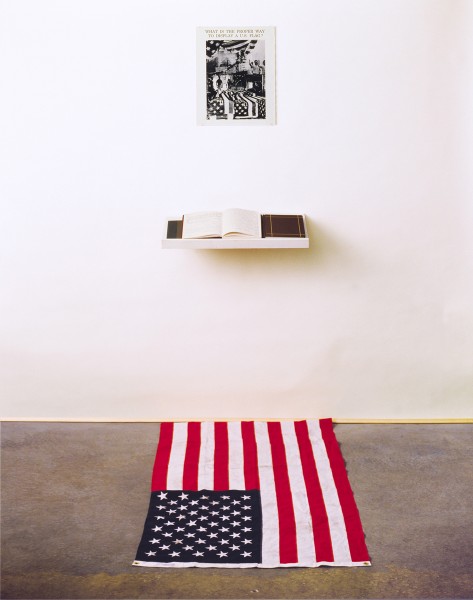
Contemporary India is going through a rather interesting phase of nemesis wherein the very notions of modernism, liberal thought and deed and freedom of expression are being bound and gagged and strange bans and censorship diktats seem to be the order of the day. This is rather ironical considering the fact that while the government is opening up to economy to increased FDI in trade and industry and encouraging foreigners to ‘Make in India’, cultural and artistic voices are being rendered mute right, left and centre. Whether it is a BBC documentary ‘India’s Daughter’ on the infamous Nirbhaya rape case, or the AIB roast video featuring some popular Indian film personalities or the release of Hollywood movie ‘Fifty Shades of Grey’ or even the freedom to use cuss words in Hindi movies or to simply eat a beef dish, bans are the bane of every Indian’s existence!
Back in the early 1950s, the inimitable Akbar Padamsee’s painting of a naked couple aptly titled Lovers was confiscated by the police from an exhibition in Bombay on charges of obscenity but the wisdom and farsightedness of a judge-duo delivered the verdict in the artist’s favor in 1954.
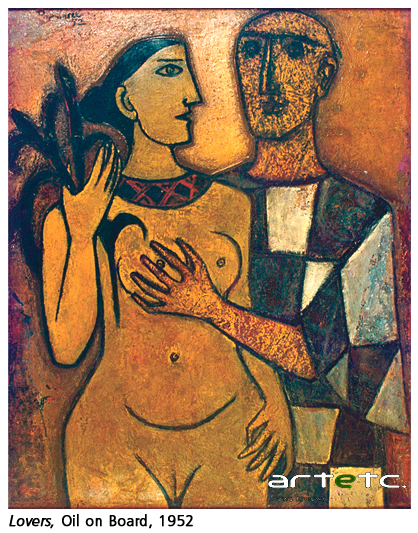
However, veteran artist Maqbool Fida Hussain passed away in 2011 pining for his homeland on the foreign shores of London as he was exiled from India in the 1990s. Showered with awards and accolades throughout the globe, his paintings drew hundreds and thousands of dollars in terms of value, and this barefooted, silver-haired genius was hailed as the Picasso of India wherever he went. But his “infamous” paintings of Saraswati, the Hindu goddess of knowledge and Durga copulating with a tiger and goddess Lakshmi perched naked on the elephant head of lord Ganesha done in the early 1970s or the Bharatmata icon, again in the nude, earned him an exile from India and lifelong wrath from Hindu activists.
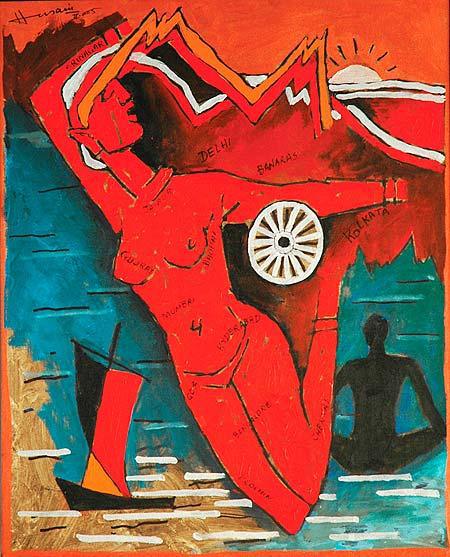
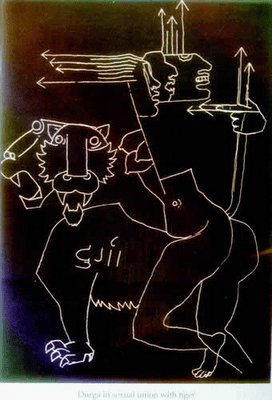
Surendran Nair’s An actor rehearsing the interior monologue of Icarus too was considered to be offending the “sentiments of the nation”, and had to be eventually removed from a show at the NGMA. As the artist puts it, “The “problematic imagery” was the rear view of a tiny winged male naked figure atop the Ashoka stambha, and it was this that the moral brigade of cultural policing interpreted as insult to the national emblem. When the artists’ community protested against their action and a constitutional lawyer refuted their interpretation of the Ashoka stambha as the national emblem, the issue died down.
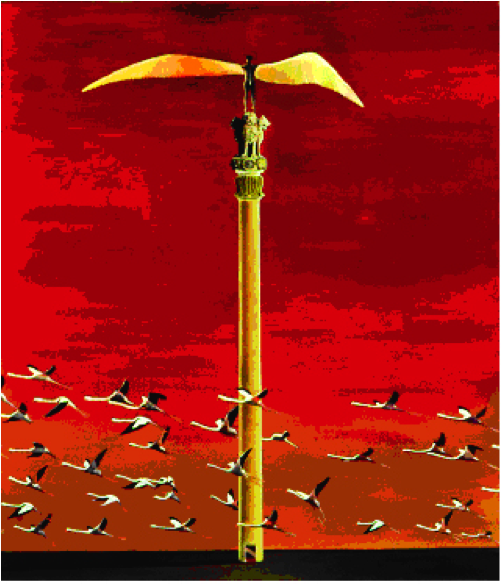
His wife Rekha Rodwittiya’s “Evocation” series of paintings were displayed in Venice in 1998 but the entire series was confiscated by the Customs at Mumbai Airport on charges of obscenity and threatened to be destroyed. Eventually, an intervention by a senior IAS officer “resolved the matter”. In an interview, Rekha stated, “As an artist, I will not accept the dictates of moral vigilantism to become the guidelines by which I make my art. I conceive my paintings from the politics that constitutes the governance of my life, and if within a democracy, this is viewed as transgressing what is considered to be appropriate by fundamentalist political agencies, then I think society should recognize that the functioning of our constitution is impaired, and legal recourse must be immediately sought. Mob violence has been legitimized by political parties in India and atrocities committed in these situations are left unpunished, using the convenience of the anonymity of a crowd to excuse the apathy of political will to enforce lawful civil coexistence. There is the suggestion that artists must be “responsible” and many believe that we desire controversy and create sensationalism via our art expressions. This is completely unfounded and a total myth that fundamentalist groups circulate to be able to use as an inflammatory tool to stir the emotions of the public, in order to perpetuate the communal divide and gain vote-bank political mileage. Retrogressive ideas of morality and Victorian notions of propriety are being touted by these elements as emblematic of ‘Indian Culture’. Art can be viewed as a chronicle of time that is informed by circumstance, and which bears testimony to the lived experiences of human existence either through direct or subversive methods of articulation. Every artist must endeavor to protect and maintain her or his autonomy as a creative person and oppose even the smallest infringement of the freedom of expression. Every voice that is silenced through censorship spells the death of a pluralistic secular nation, and diversity will ultimately be wiped out in the zeal for political “over- correctness”.
Contemporary Indian artist Tejal Shah’s realistic portrayal of the impact of the Godhra riots in Gujaraton the common masses in her 2003 documentary ‘I Love my India’ was banned owing to its potent content deemed capable of inciting public riots.

The list indeed seems unending and stories of fresh bans and impositions float every other day in journals, newspapers and leading publications but luckily, an artist, true to his or her craft, will never ever succumb to these socio-political pressures. Clichéd as it may sound, but beauty does lie in the eye of the beholder. A lingerie display, for instance, in a hi-end store might be fashion for some but a breach of modesty for many others. Similarly, the Khajuraho temple sculptures, depicting amorous couples in various moods of copulation and love-making are also distressing for some visitors while others gush over their aesthetic appeal. The lyrics of a song, words in a novel, paintings and sculptures, a scene in a television soap or movie, et al can offend or upset somebody’s sentiments or feeling somewhere on the planet and that can spark a furor. As American author Ellen Hopkins has written, “A word to the unwise. Torch every book. Char every page. Burn every word to ash. Ideas are incombustible.…And therein lies your real fear.”
Sending writers like Salman Rushdie or Tasleema Nasreen into exile for having articulated against a particular community in their books or jotting down a list of cuss words to be banned from Hindi movies in the name of being too offensive or sending young social media users into prison for posting anything against a ruling State or government on Facebook or tweeting about it are just some of the several impositions being inflicted upon those who have an opinion or wish to convey something. So distressed was acclaimed Perumal Murugan after some rightwing groups banned his novel One Part Woman based on religious rituals, that he actually announced his “death as a creative artist” and withdrew sale of all books. Dashing into the Charlie Hebdo newspaper office situated in the heart of Paris, a cultural and fashion hub for the world’s elite, and gunning down editors merely for carrying some cartoons deemed brash by a bunch of fundamentalists is the extent of extremism that creative voices are being subjected to. When all else fails then hard core violence is being deployed to muffle and stifle them. Pray, the bans and impositions are not just restricted to movies, books, paintings, artists, et al but these dictators have literally entered into our bedrooms by declaring the LGBT community under the supreme court’s directive to reinstate section 377, the 153-year-old law against “unnatural offences” introduced under colonial rule, which has long been interpreted as applying to same-sex relationships, and is a further example of how sexuality has become a combat zone in India. Why is the court concerned about sexual propensities of any individual and how will it affect the larger scheme of things in a ‘democratic, socialist, secular, republic’? And to top it all, bans have percolated even into our kitchens with several state governments all across the nation banning the consumption of beef, a highly unsavoury proposition unpalatable to most gastronomic aficionados!
In these times when issues such as global terrorism, eradication of poverty, illiteracy, unemployment, pollution, starvation, and so on need all the time and attention of so called “aware and responsible” custodians of power and influence, outraging over art or creative freedom should be completely redundant and unnecessary. Why all the anger, indignation and ‘much ado about nothing’?!
